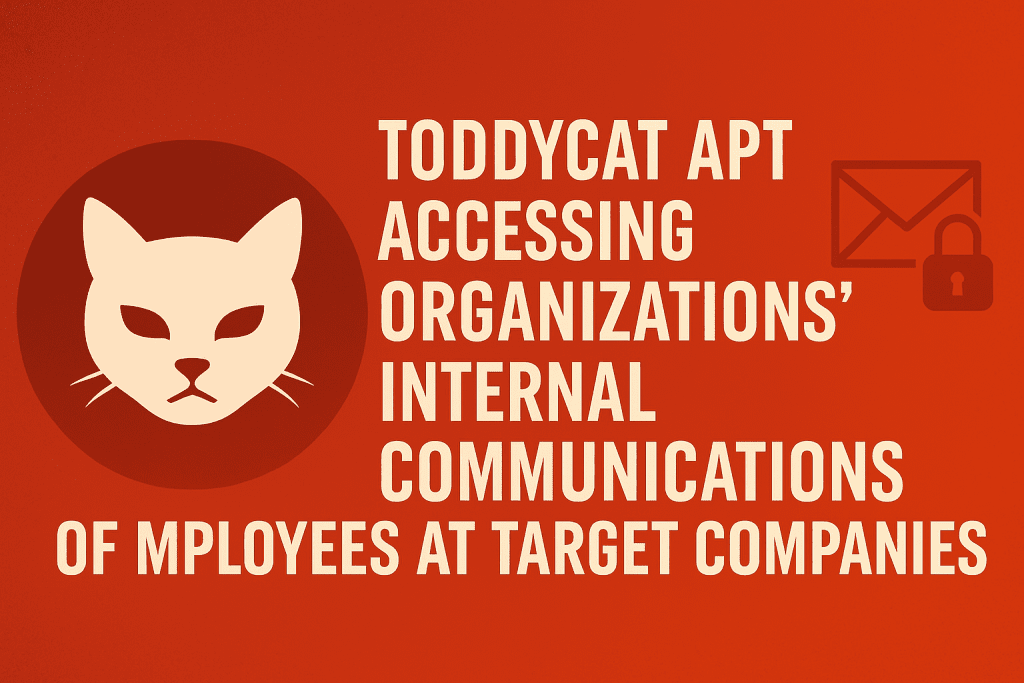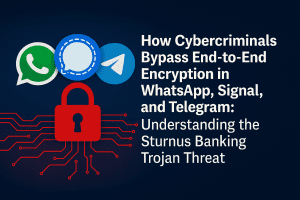
Organizations worldwide face an escalating threat as the sophisticated ToddyCat APT group deploys innovative techniques to infiltrate corporate email systems and exfiltrate sensitive internal communications. This advanced persistent threat demonstrates how even cloud-based email platforms—traditionally considered more secure than on-premises solutions—remain vulnerable to determined adversaries employing novel attack methodologies that exploit authentication mechanisms and browser credential storage.
The emergence of these advanced tactics during late 2024 and early 2025 represents a significant evolution in cyber espionage capabilities, challenging conventional assumptions about email data protection and demanding urgent reassessment of corporate email security strategies across all industries.
Understanding the ToddyCat Advanced Persistent Threat
The ToddyCat APT group has established itself as a formidable threat actor targeting organizations across multiple sectors with sophisticated cyber espionage campaigns. Unlike opportunistic cybercriminals seeking immediate financial gain, this advanced persistent threat operates with strategic objectives focused on long-term access to sensitive corporate communications and intellectual property.
Security researchers at Securelist recently documented the group’s evolution from traditional network infiltration techniques to more sophisticated approaches specifically designed to compromise corporate email security without triggering conventional detection systems. These findings reveal systematic development and testing of new tools optimized to evade modern security controls while maintaining persistent access to target communications.
The threat actor’s primary focus on email systems reflects the reality that email remains the central nervous system of modern business operations. Whether organizations utilize on-premises Microsoft Exchange servers, cloud-based Microsoft 365 environments, or Google Workspace platforms, email communications contain invaluable intelligence about business strategies, partnerships, financial information, and proprietary research that makes them prime targets for cyber espionage.
Breaking the Cloud Security Assumption
Many organizations migrated email infrastructure to cloud platforms assuming that cloud-hosted data remains inherently more secure—even during active network security breaches. The logic suggests that since email data resides externally rather than on compromised internal networks, attackers cannot easily access it.
The ToddyCat APT group has systematically dismantled this assumption through innovative techniques bridging compromised internal networks and cloud-hosted email platforms. Rather than breaching cloud infrastructure directly, threat actors exploit authentication mechanisms that legitimate users employ to access cloud email services.
This approach demonstrates sophisticated understanding of OAuth 2.0 protocols enabling single sign-on capabilities. By targeting authentication tokens validating user access to cloud email platforms, attackers bypass both network perimeter defenses and cloud security controls simultaneously.
OAuth Token Theft: The New Frontier in Email Data Exfiltration
ToddyCat’s latest campaign employs sophisticated OAuth token theft techniques enabling remote access to corporate email accounts without traditional credentials. OAuth 2.0 has become the standard authentication protocol for cloud services, exchanging time-limited authorization tokens instead of exposing passwords.
When users authenticate to cloud email services, browsers receive OAuth tokens validating subsequent access requests. If attackers steal valid tokens from compromised systems, they gain identical access privileges as legitimate users.
This OAuth token theft technique provides critical advantages. Token-based access enables email data exfiltration from external networks entirely outside compromised infrastructure. Stolen tokens often remain valid after password changes, since refresh tokens maintain extended access. OAuth token theft bypasses multi-factor authentication in many implementations, as existing authenticated sessions may not require additional MFA challenges.
The Evolved TomBerBil Tool: Systematic Browser Credential Theft
ToddyCat’s browser credential theft capabilities center on an evolved PowerShell-based TomBerBil tool optimized for enterprise environments with minimal detection risk. The tool typically executes on compromised domain controllers—providing elevated network access and less aggressive security monitoring that might impact critical authentication services.
From this privileged position, TomBerBil systematically targets browser data across organizations through SMB protocols. The malware reads target computer lists and iteratively connects to each system using network file sharing.
The tool targets multiple browsers including Chrome, Edge, and Firefox. For each system, it copies critical files:
Chrome and Edge: Login Data databases with saved passwords, Local State files with encryption keys, Cookie files storing session tokens, and browser history for reconnaissance.
Firefox: Key database files (key3.db, key4.db), credential stores (logins.json, signons.sqlite), and user profile data.
TomBerBil also copies Windows DPAPI master keys that encrypt user data. With both encrypted browser data and DPAPI keys, attackers decrypt all stolen authentication materials on external infrastructure without accessing original compromised systems.
Sophisticated Network Infiltration Through SMB Protocol Abuse
The exploitation of SMB protocols for browser credential theft demonstrates sophisticated understanding of enterprise network operations and security monitoring limitations. SMB traffic appears entirely normal in Windows environments where users routinely access network file shares for legitimate business purposes.
Security monitoring systems typically generate alerts for unusual SMB connections between unexpected systems or access patterns that deviate from established baselines. However, connections from domain controllers to workstations fall within expected communication patterns, making detection of malicious TomBerBil activity significantly more challenging without advanced behavioral analytics.
The PowerShell implementation itself provides additional evasion advantages. PowerShell exists on all modern Windows systems as a legitimate administrative tool widely used for system management and automation. Security teams cannot simply block PowerShell execution without disrupting numerous legitimate IT operations. While PowerShell logging and script analysis capabilities have improved, attackers can still evade detection through various obfuscation techniques and by operating within the noise of legitimate administrative activity.
The command-line syntax used to launch TomBerBil demonstrates deliberate evasion tactics. The “exec bypass” parameter disables PowerShell’s execution policy enforcement that normally restricts script execution. The script files themselves use generic names like “ip445.ps1” designed to blend with other system files rather than attracting attention through suspicious naming conventions.
Strategic Implications for Corporate Email Security
The ToddyCat campaign highlights critical vulnerabilities in how organizations implement corporate email security. Traditional perimeter-focused models provide insufficient protection against threats exploiting legitimate authentication mechanisms from within compromised networks.
Organizations must address key vulnerabilities:
Endpoint security requires behavioral detection systems identifying suspicious PowerShell activity, unusual file access patterns, and unauthorized browser data access. Advanced EDR platforms can block credential harvesting even when malware operates through legitimate tools.
Authentication architecture needs reevaluation with attention to OAuth token management. Implementing token binding, reducing token lifetime, and deploying conditional access policies evaluating contextual risk factors can limit stolen token leverage.
Privileged access management must extend beyond password security to comprehensive credential governance. Domain controllers require enhanced monitoring, and just-in-time administration principles can limit attacker operational freedom.
Cloud email security requires monitoring for unusual access patterns, authentication from unexpected locations, and anomalous email forwarding rules indicating unauthorized communication surveillance.
Network segmentation should isolate high-value systems limiting lateral movement opportunities and restricting SMB-based credential harvesting capabilities.
Detecting and Responding to Advanced Persistent Threats
Organizations require comprehensive detection and response capabilities addressing the full attack lifecycle from initial compromise through email data exfiltration.
Behavioral analytics identify subtle compromise indicators that signature-based detection misses. Unusual PowerShell execution on domain controllers, atypical SMB patterns, and suspicious browser file access warrant investigation. Machine learning establishes behavior baselines and flags deviations for security review.
Threat hunting enables proactive discovery before attackers complete objectives. Security teams should regularly search for credential harvesting tools, suspicious PowerShell scripts, unusual file access patterns, and OAuth token theft signs.
Incident response planning must address APT scenarios specifically. Response protocols should assume attackers established persistent access through multiple mechanisms including stolen tokens, implanted backdoors, and compromised accounts. Comprehensive remediation requires eliminating all footholds simultaneously.
Threat intelligence integration helps organizations understand current attacker tactics. Following research documenting APT evolution enables security teams to implement specific detection rules addressing known attack patterns.
Conclusion: Adapting Defenses to Evolving Cyber Espionage Tactics
The ToddyCat APT group’s evolution from traditional network intrusion techniques to sophisticated OAuth token theft and browser credential harvesting demonstrates the continuous adaptation of advanced persistent threats to defensive improvements. As organizations strengthen perimeter defenses and migrate to cloud platforms, determined adversaries develop new approaches that exploit authentication mechanisms, abuse legitimate administrative tools, and operate within the noise of normal network activity.
Protecting corporate email security in this threat landscape requires moving beyond assumptions about cloud security providing inherent protection. Organizations must implement defense-in-depth strategies that address endpoint security, authentication architecture, privileged access management, behavioral detection, and comprehensive monitoring across both on-premises and cloud environments.
The reality that APT groups can systematically harvest authentication credentials from compromised networks and leverage those credentials to access cloud-based email platforms demands urgent attention to credential protection, token management, and anomalous access detection. Only through comprehensive security programs that address the full attack chain from initial compromise through email data exfiltration can organizations effectively defend against sophisticated cyber espionage campaigns targeting their most sensitive communications.


